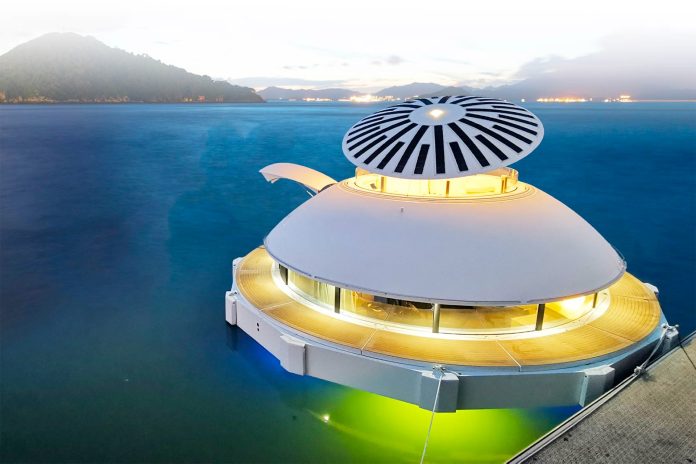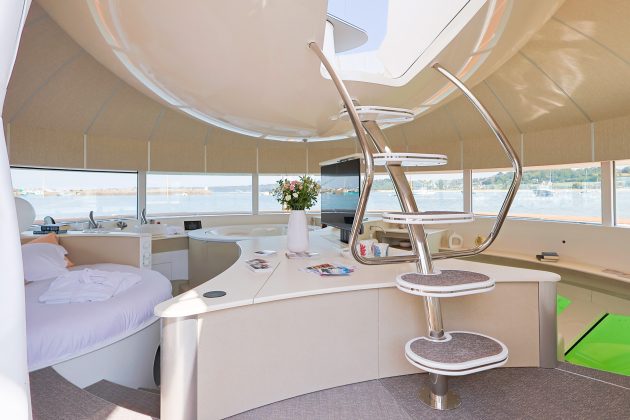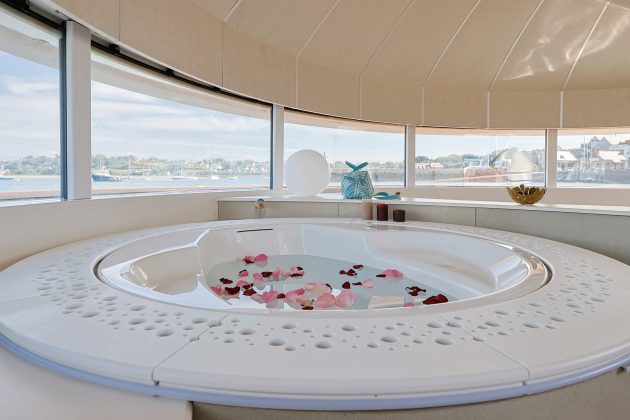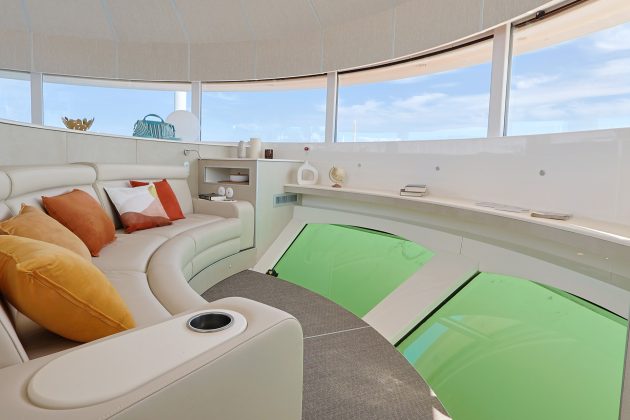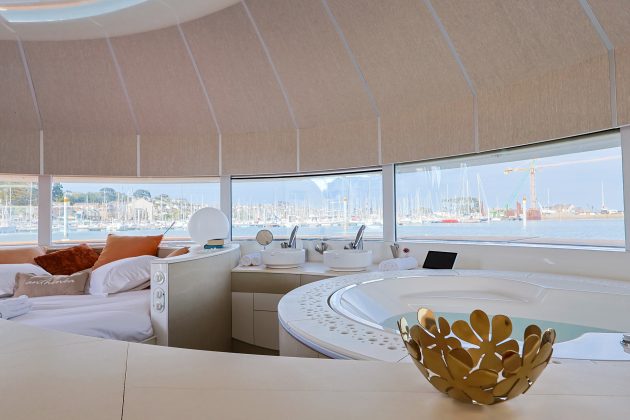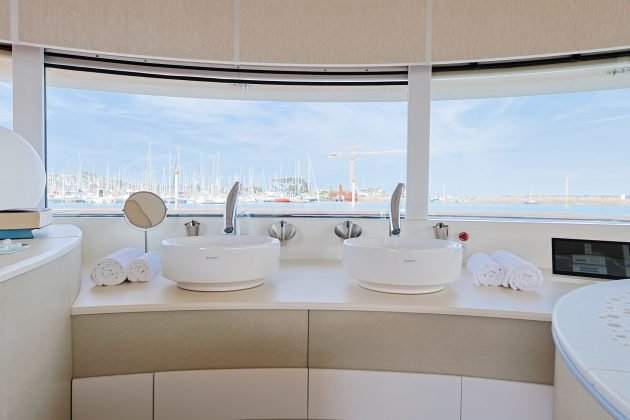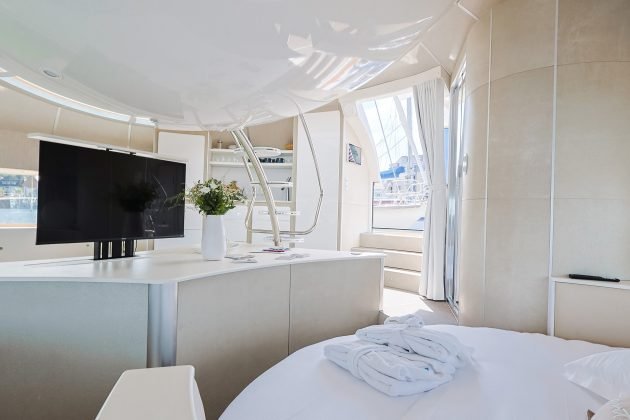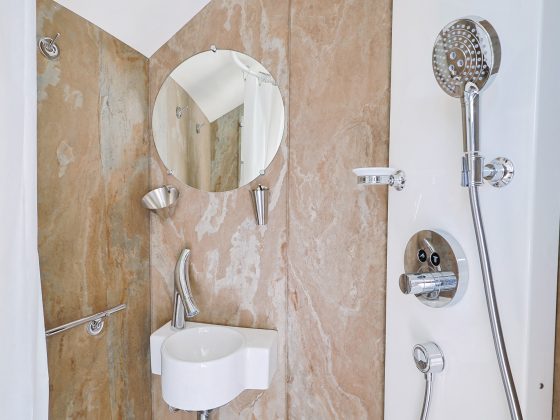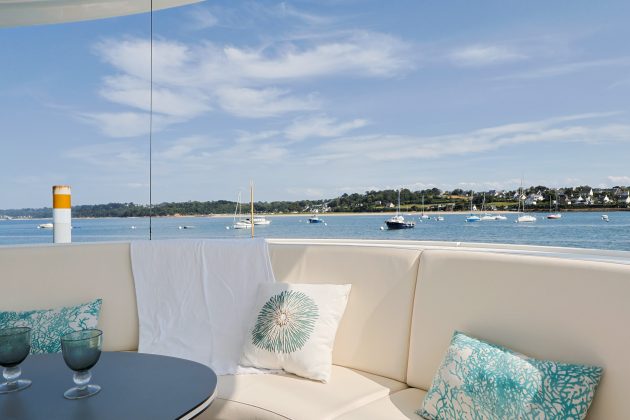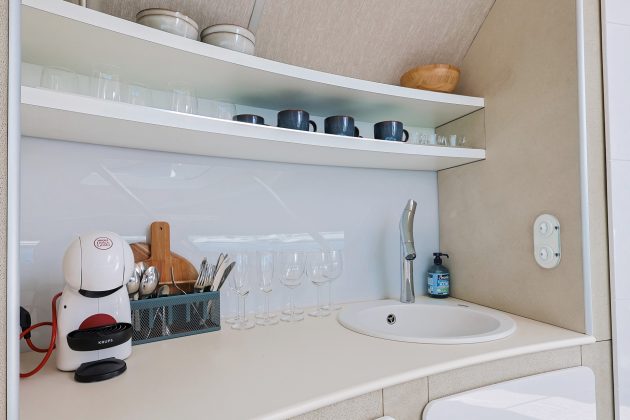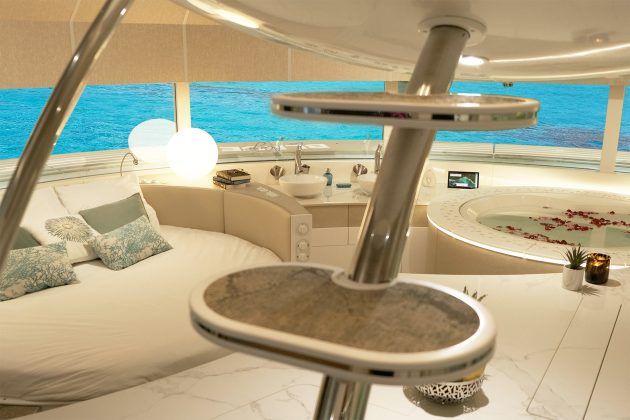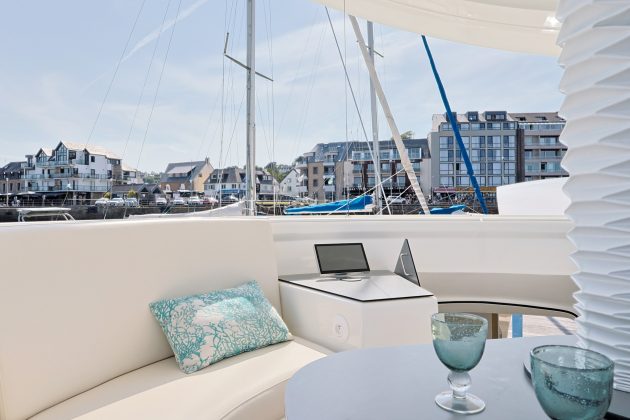The concept of floating homes is gaining traction as sustainability and mobility become central to modern living. One such innovation is Anthénea, a solar-powered floating pod that functions as a self-sustaining habitat. Designed by French naval architect Jean-Michel Ducancelle, the Anthénea offers a unique way to experience water-based living while minimizing environmental impact.
A self-sufficient floating home
The Anthénea is designed for individuals or businesses looking for an off-grid retreat. Unlike traditional waterfront properties or houseboats, this floating pod does not rely on external power, plumbing, or anchoring systems. It is equipped with five solar panels, generating up to 6 kW of power, which is stored in onboard batteries to ensure continuous operation. The structure also features a rainwater collection and filtration system, along with a built-in wastewater treatment system to prevent pollution.
According to the company, “The Anthénea is completely self-sufficient, leaving no impact on the environment. It’s designed to harmonize with its surroundings rather than disrupt them.”
Design and build
The circular structure of the Anthénea measures 9.2 meters (30 feet) in diameter and weighs approximately 5,000 kg (11,000 lbs). The shape is inspired by marine biomimicry, ensuring stability on water. Unlike traditional floating structures, it uses a ballast system to remain steady, even in rough waters. The pod can withstand waves up to four meters (13 feet) high, making it suitable for both coastal and inland water bodies.
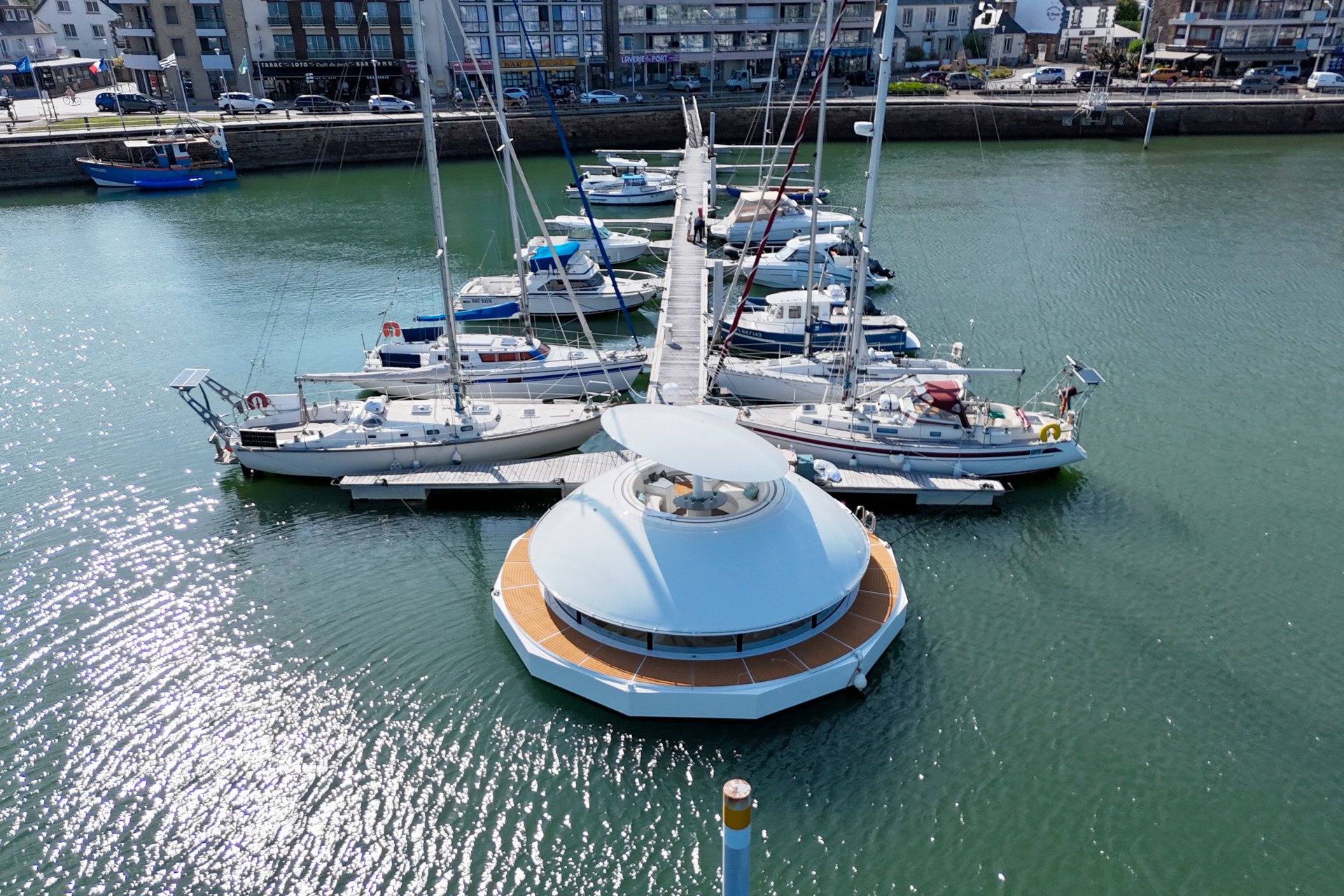
Its fiberglass hull is built to resist corrosion and harsh weather conditions, while the anchoring system is designed to avoid damaging the seabed. Instead of a traditional mooring, it uses a sand screw system, which allows it to stay in place without harming marine ecosystems.
Interior features
Inside, the Anthénea is designed to provide comfort and functionality without sacrificing sustainability. The main living area includes:
- A king-size bed and seating area
- A circular soaking tub, inspired by Roman baths
- A panoramic lounge with large windows
- A mini-bar and small kitchenette
- Smart ventilation and air circulation systems
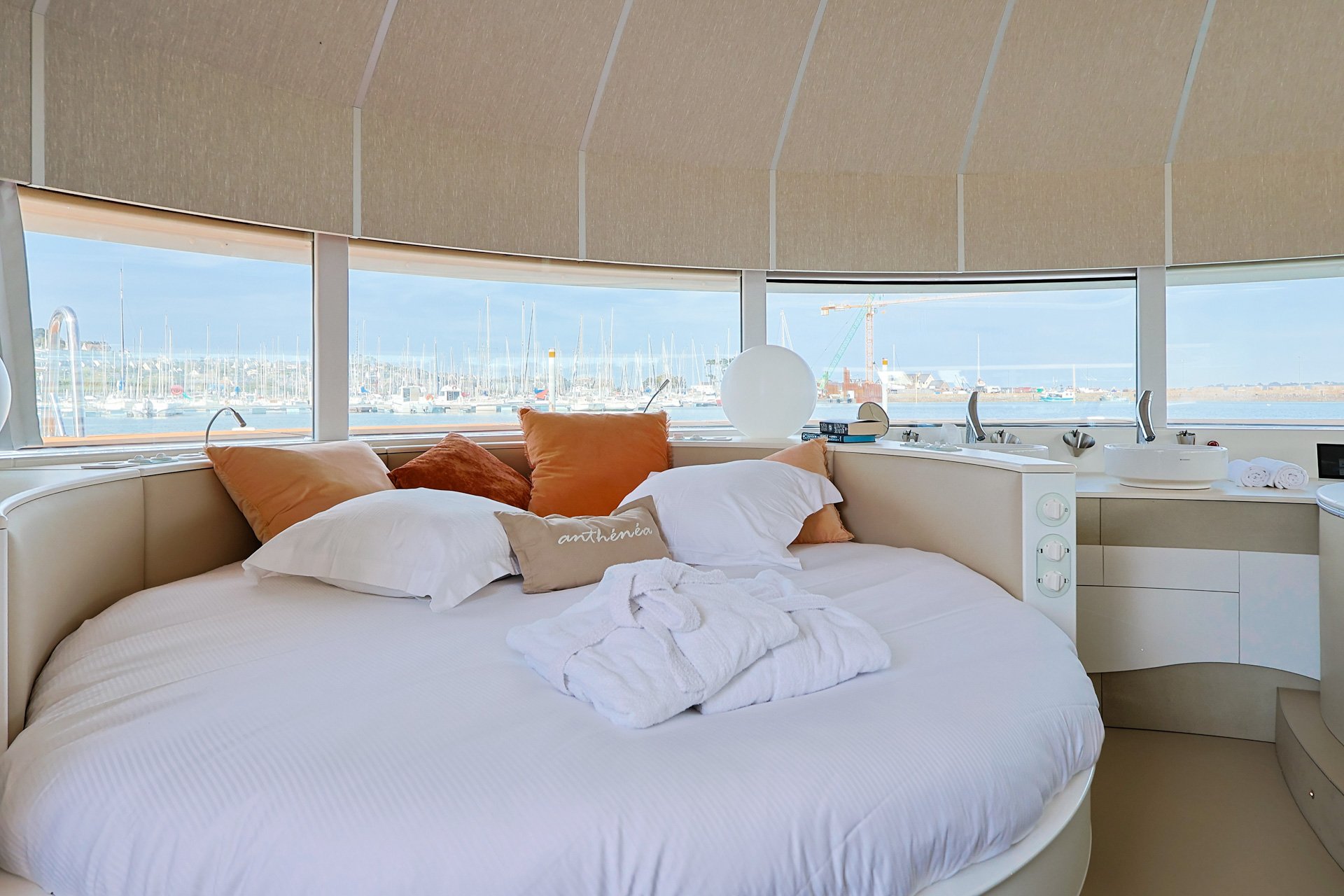
A notable feature is the underwater observation window, allowing occupants to view marine life directly from the living space. The upper level of the Anthénea features a rooftop solarium, complete with sunbeds and a retractable sunshade, offering a 360-degree view of the surroundings.
Mobility and adaptability
While primarily designed as a stationary unit, the Anthénea offers optional silent electric propulsion, allowing it to reposition itself when necessary. This makes it a versatile alternative to houseboats and floating villas, as it can be moved between different locations.
The pod is suitable for various water environments, including lakes, rivers, and coastal areas. It can be used as a private retreat, a remote office, or even as part of an eco-friendly resort. Some luxury hotel operators have already expressed interest in integrating Anthénea pods into their properties as a sustainable alternative to overwater bungalows.
Pricing and availability
The Anthénea is available for purchase. The basic model starts from roughly $365,000 while the high-end models, like the floating spa version, will set you back $730,000. Buyers can choose from different interior finishes, upgraded solar power systems, and optional propulsion features. The company ships worldwide, although availability may depend on local maritime regulations.
Source: Anthénea

